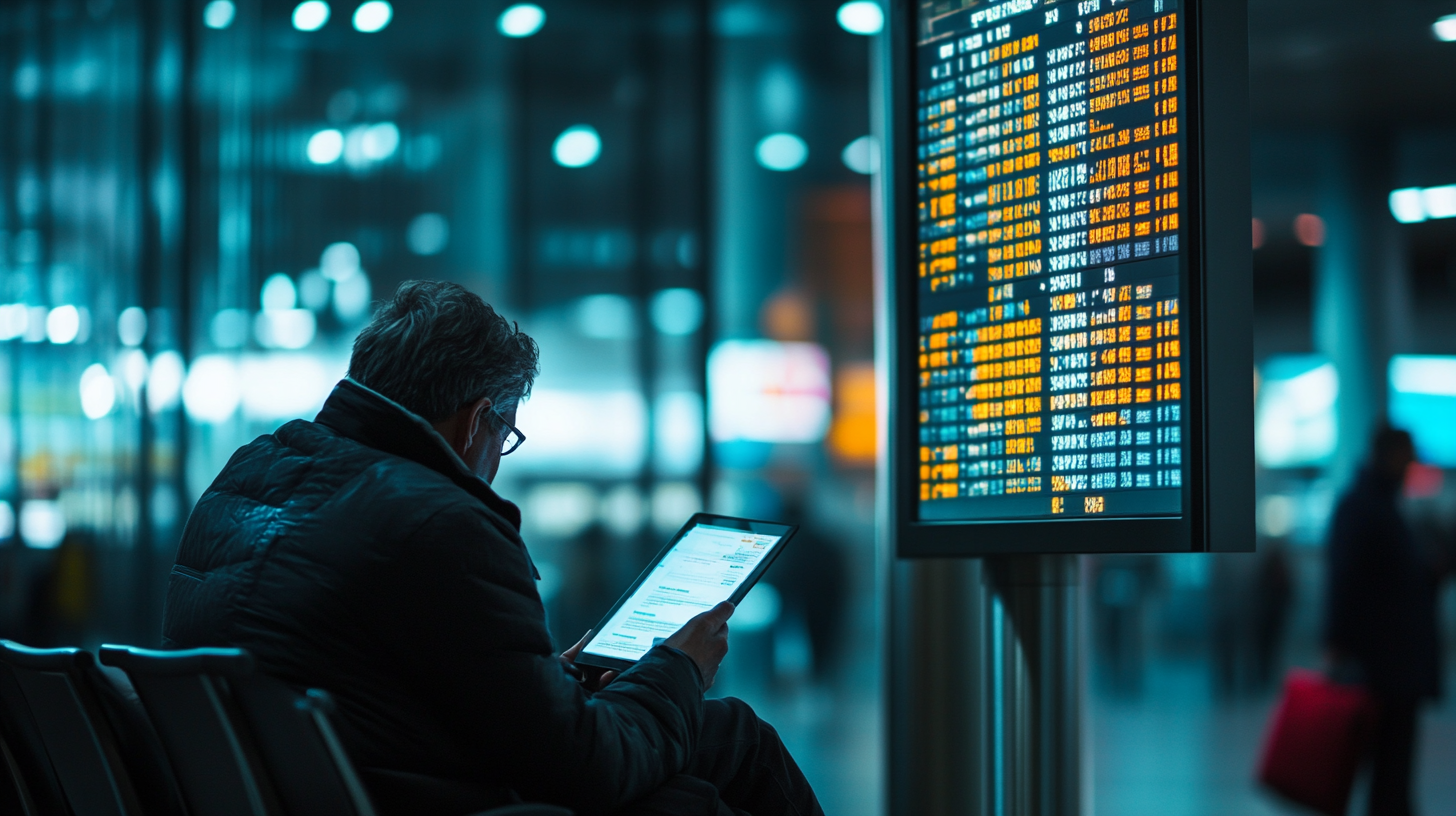Per Diem Essentials for Frequent Flyers

Whenever I embark on a new journey, I like to keep an eye on all the small details that add up to create the bigger picture of travel expenses. Per diem rates are one of those essential elements, helping me manage lodging, meals, and incidentals without overly complicated receipts or guesswork. Below, I’m sharing the latest info on the IRS updates and how I factor them into my own adventures, especially if I’m heading somewhere with fluctuating costs.
Understanding Per Diem Basics

From my own perspective, per diem rates serve as a lifesaver when juggling multiple flight connections and overnight stays. Instead of tracking down every meal or coffee receipt, I rely on standardized daily allowances to streamline reimbursement. This approach is particularly handy when traveling to cities with shifting rates, since I can plan my budget around a known figure.
Official U.S. government resources, usually identifiable by their .gov addresses and secure HTTPS protocols, define these per diems clearly. According to industry data, most of the continental U.S. follows standard rates, but about 300 “non-standard” areas come with their own higher or lower benchmarks, capturing distinctive cost-of-living factors. I’ve seen stark differences even among close regions, so staying updated gives me a better sense of how much I can allocate toward accommodations and incidentals.
Beyond the continental states, the Department of Defense manages rates for Alaska, Hawaii, and certain U.S. territories, while the Department of State sets foreign per diem rates. I often skim these listings before takeoff, especially for overseas travel, to ensure I’m not caught off guard by expenses like currency exchanges or elevated meal prices. In my experience, being informed up front can be the difference between focusing on business (or relaxation) and scrambling to balance a travel budget.
New 2024-2025 IRS Rates

The latest IRS changes, effective October 1, 2024, have raised per diem allowances to $319 for high-cost areas (up from $309) and $225 for low-cost areas (previously $214). According to industry data from early 2025, these adjustments reflect the rising cost of lodging in key metropolitan zones, where hotel prices can spike during peak seasons. Personal observation aligns with this trend—my stays in places like Los Angeles nearly always creep beyond the national norm, which is why the IRS’s classification of high-cost areas makes planning more reliable.
Meal and incidental expenses also saw an uptick: $86 for high-cost areas and $74 for low-cost areas. A few localities, including Los Angeles and Boise, landed on the high-cost list, while Missoula was removed. I find it crucial to track such shifts because they often impact how much meal flexibility I have. On top of that, anyone in the transportation industry gains a special bump to $80 per diem within the continental U.S. or $86 outside it, which is a valuable advantage for pilots, airline staff, and others crisscrossing different states and countries.
Before I set my itinerary, I glance over these rate changes to help estimate potential overhead. It’s far more straightforward than crunching receipts after the fact, and it guarantees I’m not missing out on a legitimate deduction opportunity.
Who Qualifies for Deductions

In my experience, qualifying for these deductions isn’t a free pass; there are rules. The IRS states that business travel expenses must be reasonable, necessary, and tied directly to a trip away from a person’s tax home. Typically, if a work assignment extends past a year, it’s no longer considered temporary, which disqualifies it from many of these perks. A recent study suggests that many travelers misunderstand these timeframes, leading to overlooked or disallowed expenses.
For self-employed individuals, using standard meal and incidental rates often simplifies things, though I’ve learned firsthand that tracking every relevant travel receipt is still wise. No one wants a surprise during an audit. Special rules for conventions and those in the military reserves further complicate the picture, so checking the IRS guidelines for one’s specific scenario remains vital.
I frequently advise colleagues and fellow flyers to be vigilant and consistent, because a single year can fly by more quickly than we think. The last thing I want is to lose eligibility for deductions because of a misunderstanding in the rules or a shift in work location.
Tips for Hassle-Free Record-Keeping

Keeping thorough documentation is essential to defending any claim. I usually maintain a dedicated folder on my phone with digital copies of everything—from boarding passes to meal receipts. Whether I use per diem rates or actual expenses, having that electronic trail helps me cross-reference my travels accurately.
Another strategy is to note trip dates, destinations, and business intent in an organized spreadsheet. According to a 2025 survey by a well-known accounting firm, small business owners who keep consistent travel logs are 50% less likely to face prolonged audits. I also watch for new expense-tracking apps that integrate real-time currency updates and region-specific per diem data. In my own experience, these tools reduce errors and simplify tax filing day.
Transparency goes a long way. Indicating who attended a work meal or the precise reason for a client dinner can save time if the IRS asks for supporting evidence. If anything seems unclear, consulting a tax advisor is often worth the peace of mind.
Seat5A‘s Quick Picks for Stress-Free Per Diem

I’ve always loved the idea of being ready for the unexpected. Part of my routine is acquainting myself with local rates before I even book a flight. That pre-trip homework means fewer surprises upon arrival. I also store everything in the cloud—hotel receipts, airfare, meal itemizations—so even if my phone decides to take a tumble, I can recover the data instantly.
Another tip is to integrate location-based alerts, reminding me when I’m in a high-cost area. Since these lists can change annually, I build calendar notifications to reassess what’s been removed or added. Tracking which locations qualify as high-cost gives me a better perspective when I need to plan for lodging or decide on a place for team dinners.
Finally, using up-to-date IRS data is non-negotiable. I can’t stress enough how often rates have changed from year to year. Staying on top of those adjustments allows me to maintain a consistent travel budget and concentrate on the more exciting aspects of travel—like exploring new technologies, cheering on women in STEM, and discovering new ways to maximize the in-flight experience.
Final Thoughts

Per diems keep costs predictable and help travelers focus on what really matters—conducting business, forging meaningful connections, and maybe squeezing in a bit of enjoyment between meetings. By staying updated on the latest IRS changes and paying close attention to one’s tax home requirements, these traveler-friendly allowances can streamline expenses and minimize financial stress.
In my view, the key is doing a little legwork before you jet off. Research your destination’s classification, plan your meals and lodging in line with the established per diem rates, and log everything methodically. In today’s fast-paced world of business trips, those extra steps mean more time for genuine discovery and professional growth.
Amelia Yeaher’s Take
From an aviation enthusiast’s vantage, I’ve found that understanding the nuances of per diem regulations turns what could be a budgetary mess into a manageable routine. There’s something satisfying about taking a proactive, data-driven approach—much like testing a new flight system—to ensure each leg of the journey runs smoothly.
For those of us captivated by innovation and grounded in practicality, per diem knowledge is an invaluable travel tool. It keeps us ready for surprises and frees up mental bandwidth for the next big idea in the skies.
Seat5A is always here to help you soar higher.






